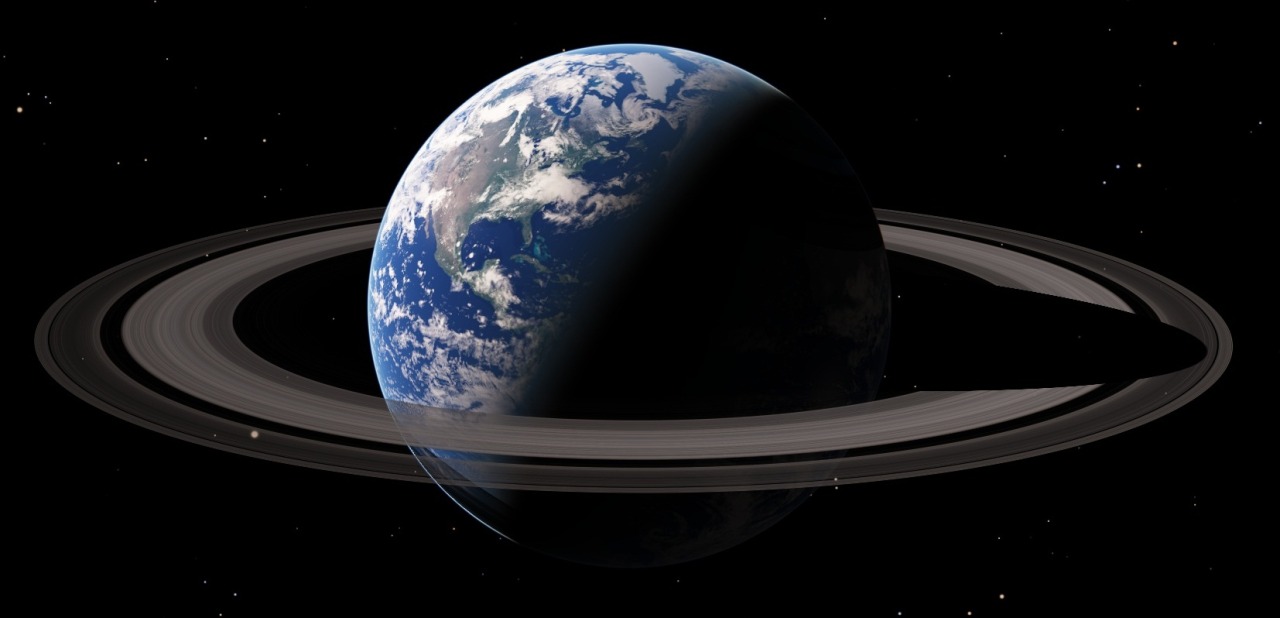we-are-star-stuff:If Earth Had a Ring Like SaturnOur planet is lucky enough to have a large moon orb
we-are-star-stuff:If Earth Had a Ring Like SaturnOur planet is lucky enough to have a large moon orbiting not too far away, which makes for very pretty moonlit nights. But for spectacular skies it might almost be worth trading in our moon for a ring like Saturn’s.In fact, the earth did once have a ring - as part of the formation of our moon, ironically enough. When the planet Thea crashed into the earth, a titanic amount of material was blown into space. This went into orbit around the earth, forming a ring until it all eventually coalesced into our present-day satellite. This only happened because the material was orbiting outside of earth’s Roche limit.In 1848, the French mathematician Edouard Roche calculated that if a large satellite were to approach too closely to a planet, it would be torn apart by the planet’s gravitational forces. This happens because the gravitational attraction of a planet on a moon is not equal. The planet pulls more on the side of the moon closest to it and less on the side further away. If the moon gets too close, this unequal pull can become great enough to tear the moon apart. Every planet has what is called a Roche limit.Some astronomers believe that Saturn’s rings are material that was unable to form into a moon because it lies within the planet’s Roche limit. The gravitational pull of Saturn prevents particles from clumping together to form a moon. Another idea popular among scientists suggests that during the time when Saturn was first forming, it had one or more moons just outside its Roche limit. The bigger a planet is, the more gravity it has. And the more gravity it has, the bigger its Roche limit is. So as Saturn grew larger, its Roche limit grew, too. The limit soon moved past the inner moons and these moons soon broke apart. The remnants of the destroyed moons eventually formed the magnificent rings we see today. There may still be large pieces of these ancient moons within the rings. They would be much smaller than their ancestors but a thousand times larger than a typical ring particle. Another theory suggests that a few hundred million years ago - at a time when the early ancestors of the dinosaurs were roaming Earth - Saturn may have had no rings at all. The rings formed when one or more small moons wandered too close to Saturn. When they got within the Roche limit, Saturn’s gravity ripped them apart. After millions of years of bumping against one another, the pieces of moon were ground into the tiny particles that form the rings today.If we had rings in the same proportion to our planet that Saturn’s are to it, it is pretty easy to figure out what they would like like from different places on the earth. From the equator the rings would be passing directly overhead. Since you’d be looking in the same plane as the rings, all you would see is a bright line arching from horizon to horizon. Here is what the rings might look like from Quito, Ecuador:If we travel just a little further north to Guatemala, the rings begin to spread across the sky. The earthlight illuminating the dark side of the moon is many times brighter than we are accustomed to, due to the increased sunlight being reflected from the rings.From Washington, DC (at 38° latitude), the rings begin to sink below the horizon, though they would still be an awe-inspiring sight as they dominate the sky both day and night.At the Arctic Circle, the rings barely reach above the horizon. Seen here from Nome, Alaska, the brilliant rings illuminate the barren landscape scarcely more than a full moon would. Unlike the sun or moon, however, the rings neither rise nor set… they are always visible, day or night, always in exactly the same place. -- source link
Tumblr Blog : we-are-star-stuff.tumblr.com
#like 3 moons#hella
